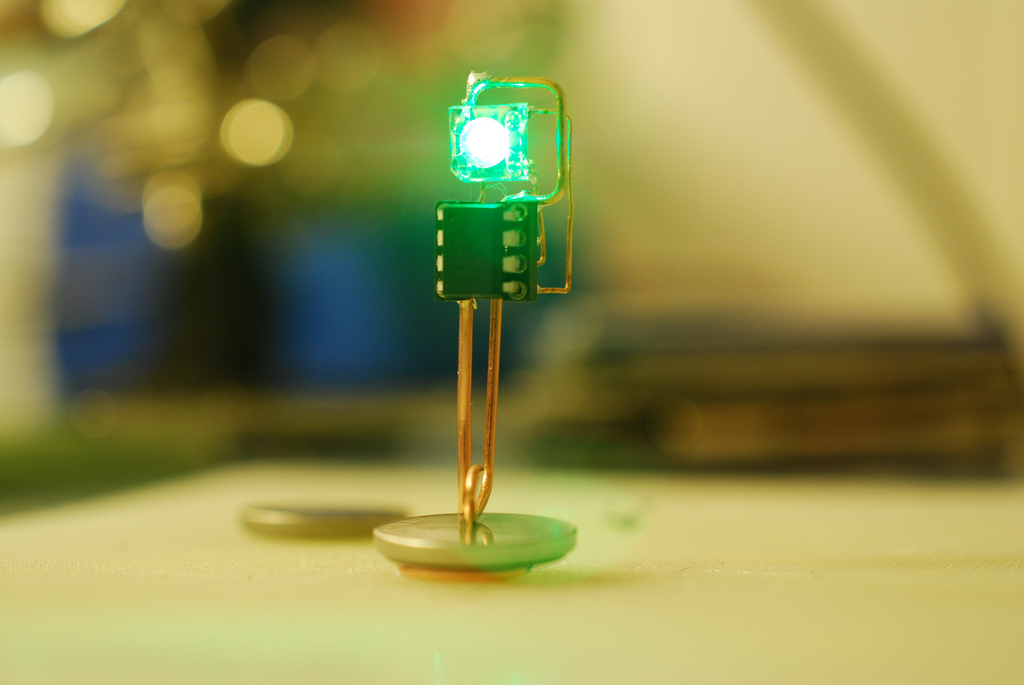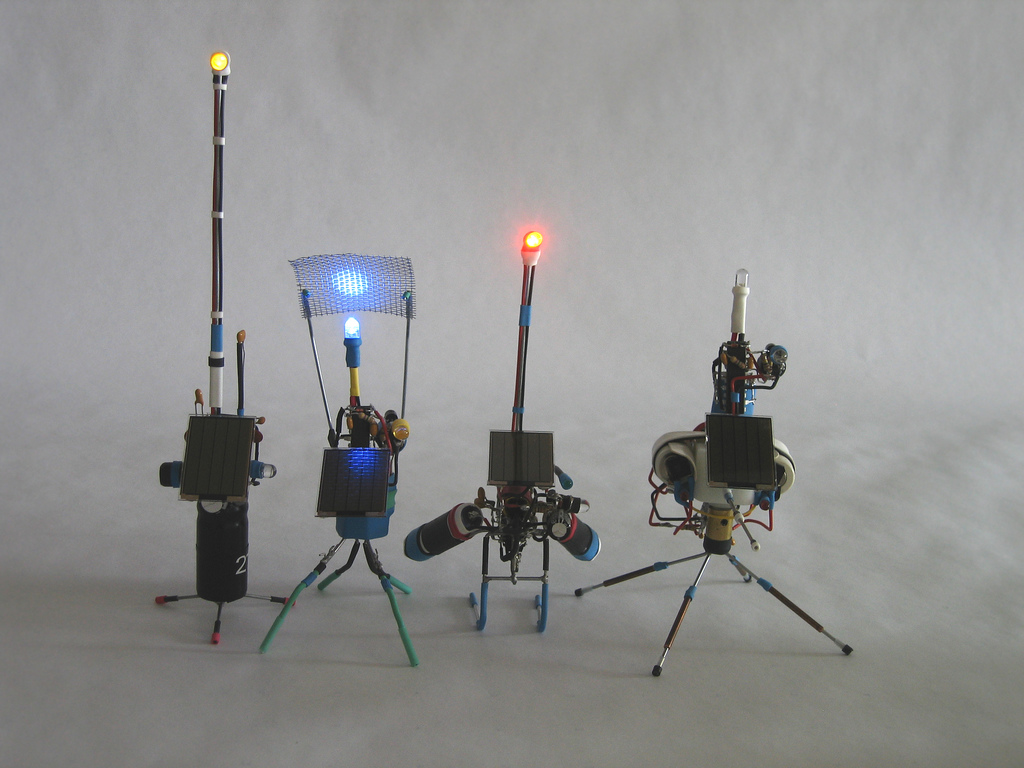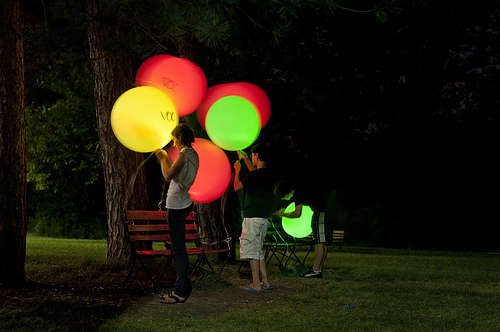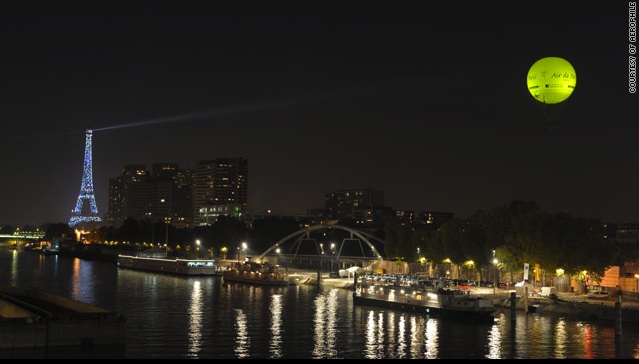
Jim Blackhurst’s SmartLED SolarTherm is a minimalist information display. Consisting of an RGB LED, a watch, and an ATTiny25 microcontroller. The chip contains a temperature sensor whose reading is displayed as light pulses. According the comments on Makezine, the internal temperature sensor is +/- 10 C (+/- 18 F), so its not very useful.

SolarTherm is simpar to M27’s Zach DeBord’s pummers. These charge a capacitor from a solar cell, and when the light level drops, the capacitor discharges, and causes an LED to blink.
While as an ambient displays these are visually interesting, especially Zach DeBord’s pummers, these seem to suffer from the main problem with all ambient displays. They trade simplicity for usefulness.
I want the display to be both pretty, but also informative. The display needs to be immediately interrogated. Similar to the how a grandfather clock provides a chime ever 15 minutes to an hour, but also can be viewed in order to learn the exact time. I’m thinking of something like Riedi and Gloor’s Weather Diorama.
Things like Nabaztag or the infinitely more endearing, Michael Kaminsky and Paul Dourish‘s SWEETPEA (aka “The Microsoft Barney Paper”) are more confusing than anything. Even baseball signs aren’t that confusing.
Maybe the best ambient display I’ve seen was simply a string hanging from a DC small motor wired directly into an ethernet cable. As packets would pass, the motor would be powered, causing the string to wiggle. As the network activity increased, so would the vigorousness of the string’s dancing. The great thing about this display is that it’s immediately and intuitively interpretable, while something more complex requires the user to learn some of sign language.



